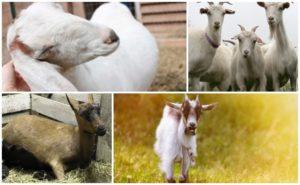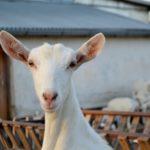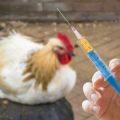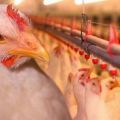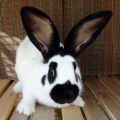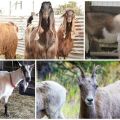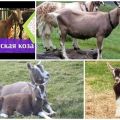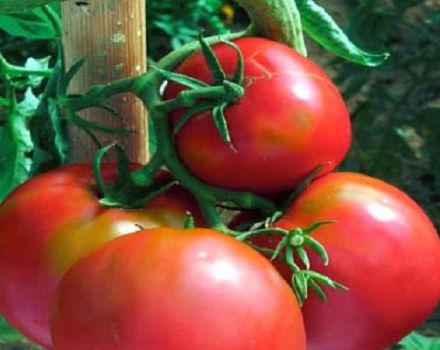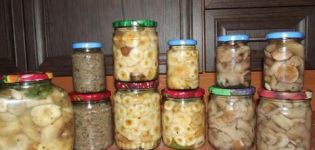Top 5 breeds of hornless goats and comparative characteristics of productivity
Horny goats are popular with breeders because they are less of a hassle. They are not aggressive, obedient, and the likelihood of injury to other animals in the herd becomes minimal. There are several breeds of domestic goats, which are especially common in our latitudes. It is up to you which species to choose to breed for meat, milk and wool.
What does a horny goat mean?
Horned animals are animals that were born without horns. These are artificially bred breeds, they are not found in nature. Instead of horns, goats grow small bumps or bumps. The most common types are:
- Toggenburg.
- La Mancha.
- Czech.
- Nubian.
- Zaanenskaya.
It is noteworthy that the hornless gene can be inherited. Sometimes these parents have horned kids, this is the norm. Due to the fact that hornlessness in the breed can be accompanied by infertility (hermaphroditism) in males, it is recommended to pair hornless and ordinary animals.
Description of breeds
To understand the intricacies of goat breeding, you need to know the hallmarks of hornless goats.
Toggenburg
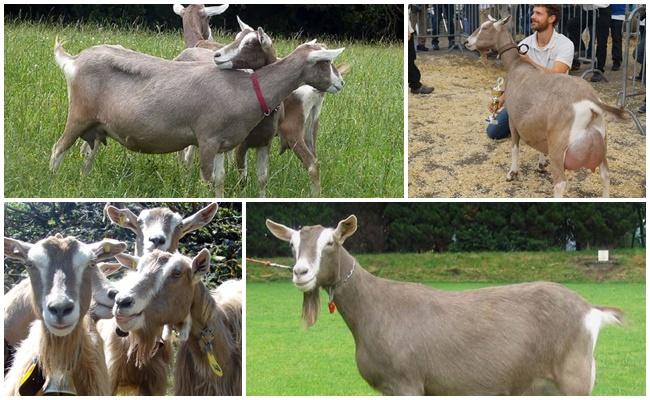
A breed of goats without sharp horns, meat and dairy destination, originally from Switzerland. Toggenburg is an administrative district, as well as the city of the same name near Zurich. A distinctive feature is the presence of a long, thick coat. The species seems to be specially bred for Russia. The main advantages of this goat are as follows:
- strong physique;
- thick coat;
- high milk yield.
The disadvantage is the low percentage of fat in the product, the almost complete unsuitability (disadvantage) of the breed for breeding for meat. The color is light tones, beige or brown. The constitution is dense, with well-developed muscles.
Representatives of the breed are often used to improve low-yielding specimens. Milk is used to make delicious cheese.
La Mancha
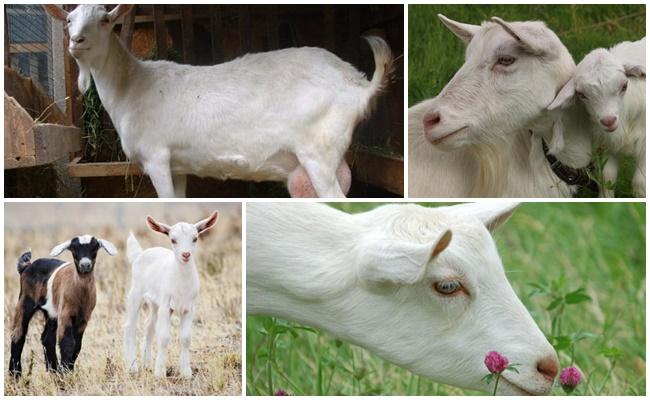
In the process of breeding this breed, goats not only lost their horns, but also the auricles almost completely atrophied. The queens are noted for high fertility, in one litter they bring up to 3 kids. Milk is odorless, perfect for raw consumption, processing.
Breed advantages:
- calm character;
- versatility (suitable for both milk and meat);
- inheritance of the gene for hornlessness when crossed with other species.
The disadvantages include undeveloped ears, the high cost of young animals.
Czech
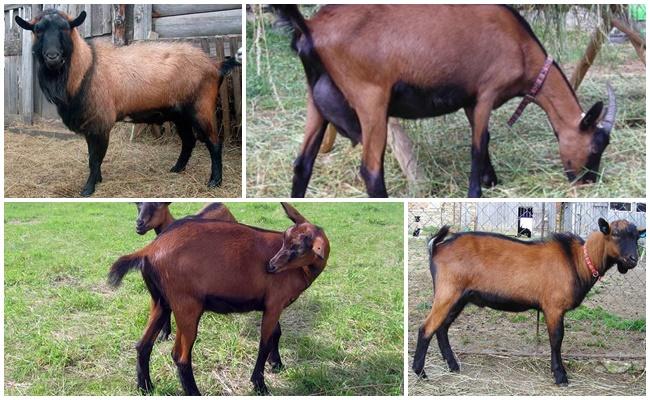
An exceptionally dairy breed that was miraculously saved from extinction. At first, exclusively hornless specimens were selected in the offspring, which led to degeneration. At the moment, the restriction has been lifted, Czech goats are successfully crossed with ordinary, endowed horns.
The Czech goat has the following advantages:
- good adaptation to the conditions of detention in the Russian Federation;
- stable lactation.
Not without flaws. In the course of selection it is necessary to "dilute" the breed with horned specimens. They are large in size, but folded in proportion. The head is small, the color of the coat is mainly from golden to chocolate. Legs are black, there is a characteristic "belt" on the back. The ears are long.
Nubian
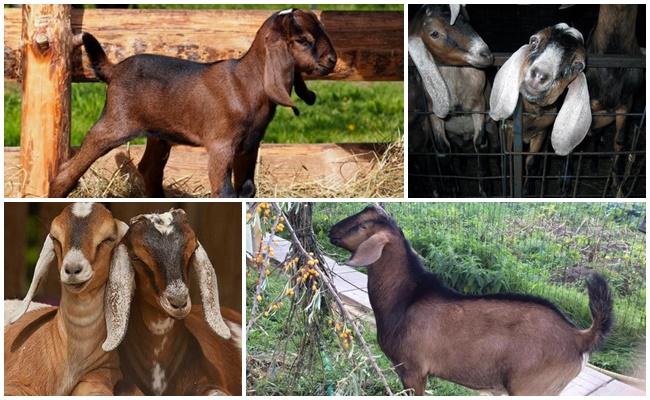
Perhaps this breed has the most memorable appearance: a humped nose, creating a unique profile, and large, hanging ears. The length of the lobe is outstanding: in some specimens it reaches 40 centimeters. The uterus with short hair gains weight up to 60 kilograms.
The goat has dimensions, the weight is even greater. The most common colors for nubies are black, red, brown. There is also a spotted color, when light stripes and spots are placed on a darker background. The goats have a nuclear temperament, they are very mobile, they emit loud cries.
As confirmation of the advantages of the breed over others, the following arguments are given:
- productivity;
- prolonged lactation;
- litter viability.
The disadvantage is some capriciousness of goats: Nubians will never live next to other breeds. More susceptible to bloodsucker bites. Milk is extremely fatty, saturated with protein, making it possible to produce unique cheeses.
Zaanenskaya
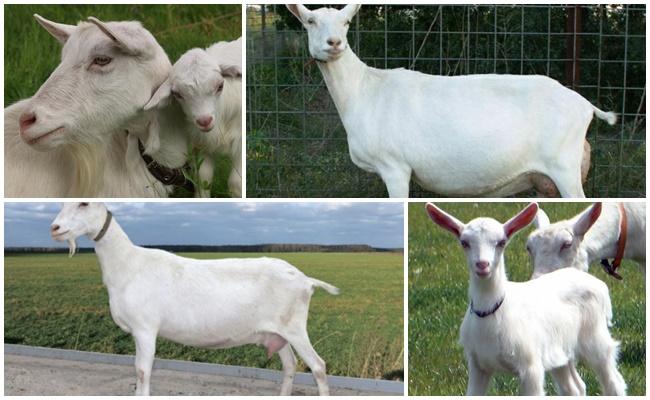
The breed is one of the oldest existing ones. The goats turned out to be unpretentious, with good milk yield. Both females and males are large: 50 kilograms in goats and up to 80 kilograms in goats. The legs are long, the constitution is strong. There are both light and colored specimens.
The main advantages of the breed:
- productivity is higher than other types;
- obtaining valuable, dietary meat;
- lack of unpleasant odor.
At the same time, they are demanding on the conditions of detention, they can hardly tolerate the Russian climate.
They are distinguished by a calm, balanced temperament, they have no equal in terms of milk yield. On average, up to 11 liters of pleasant, odorless milk can be obtained from a zaanenka per day. When breeding the breed, it is recommended to combine hornless and horned individuals.
Comparative characteristics of productivity
To navigate the milk yield indicators, to know how the breeds differ in this parameter, it is enough to familiarize yourself with the data presented in the table. And it immediately becomes clear who is the champion here:
| Breed name | Milk yield per day, liters | Fat content of milk,% |
| Toggenburg | 3 | up to 5 |
| La Mancha | 6 | up to 5 |
| Czech | up to 5 | up to 4.5 |
| Nubian | up to 4.8 | up to 7.5 |
| Zaanenskaya | up to 7 | up to 4.4 |
It can be seen that the productivity is higher in saaneeks, but their milk fat content is lower. The lactation period is long, 270-300 days. Traditionally, on large farms, Saanen goats are used, which are easily tamed to machine milking.
Care and maintenance
The conditions for keeping hornless goats are no different from those for their horned fellow tribesmen. Mostly unpretentious, gaining weight well, not picky about food. To understand the intricacies of the content, you must have information about the characteristic features of this type:
- With rare exceptions, the temperament of hornless goats is calm, devoid of aggressiveness.Animals will not arrange traditional fights for the best pasture, territory.
- All breeds are attached to people, not adapted for survival in natural conditions.
- They require careful attention, since they are in poor health and are prone to infections.
- Often the goat can be infertile, this is the price for being hornless.
- It is necessary to watch the hooves, as in hornless goats they are weak and often damaged.
- Females are fertile, bringing 2-3 kids at a time. The birth process is relatively easy, without complications.
- The average size of hornless goats is smaller than that of horned goats. In rare cases (in Zaanen), the male can gain up to 80 kilograms of weight.
Goats eat everything that is good for food: green mass, prepared briquettes, hay or silage. For a cold climate, the Toggenburg breed is more suitable, for keeping in insulated farms, for obtaining large milk yields - the Saanen breed. The specific choice of a variety depends on the goals and objectives of the livestock breeder. It is no coincidence that the classification, division into dairy, meat and dairy and wool breeds is provided.
